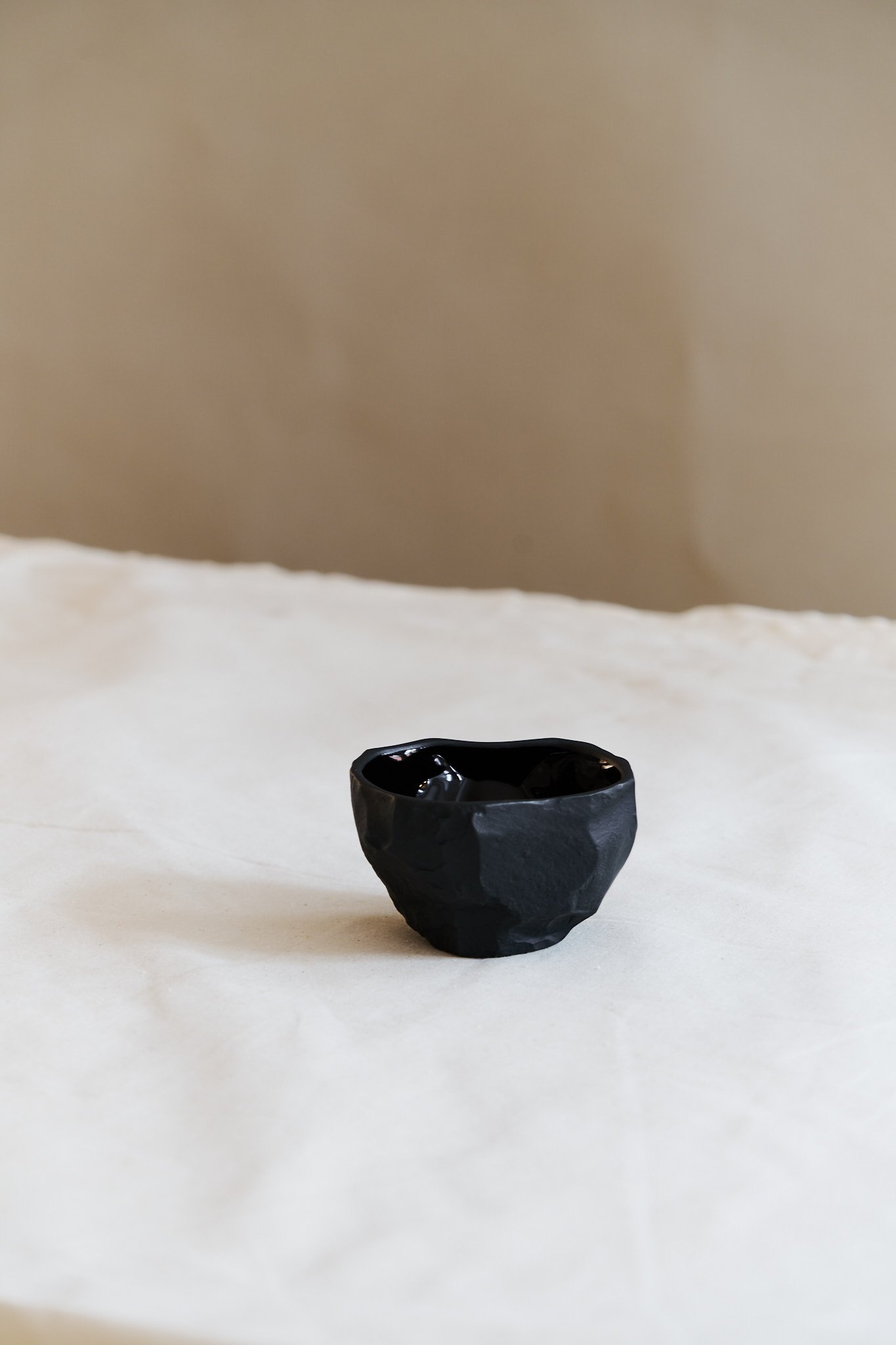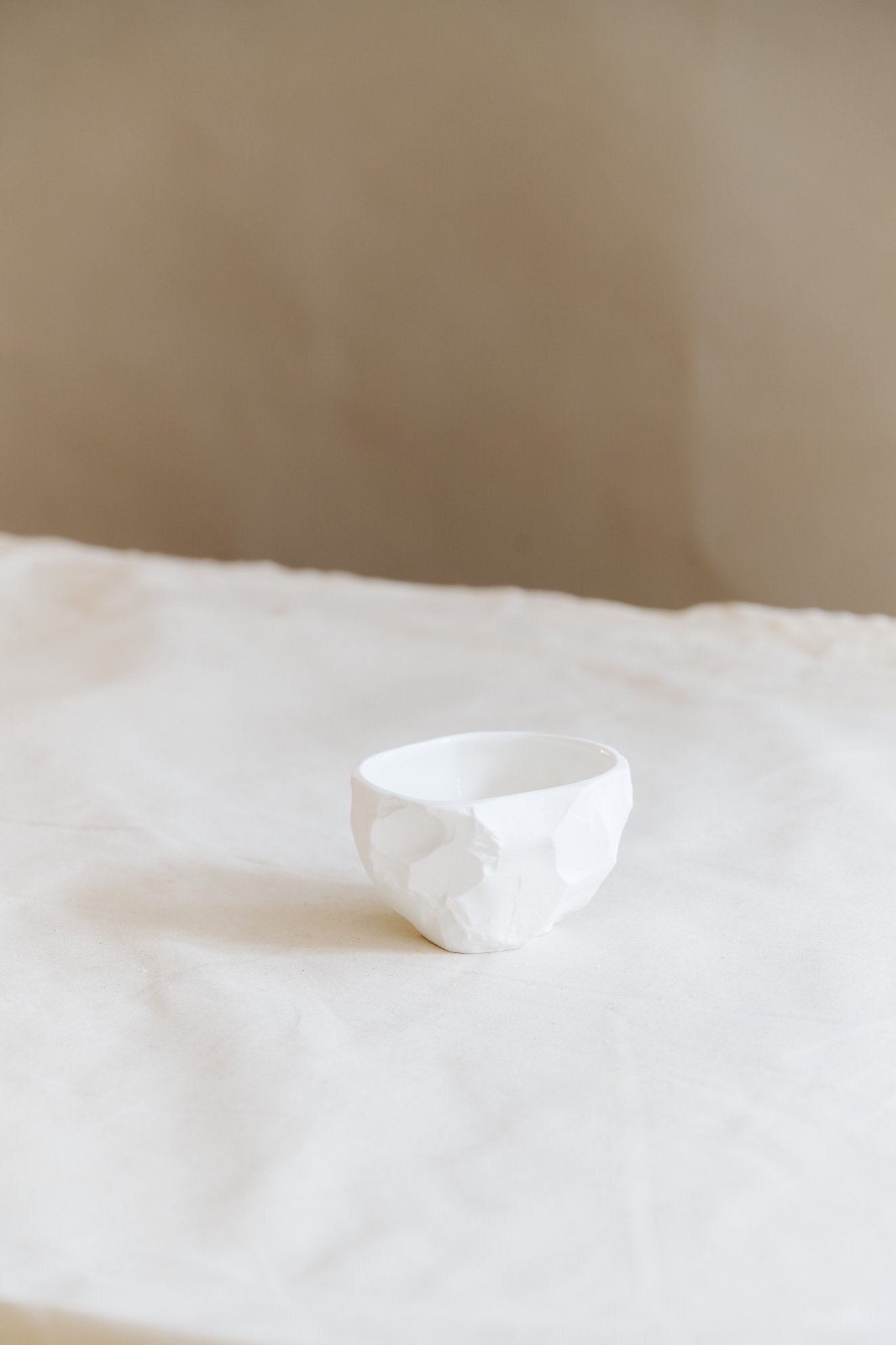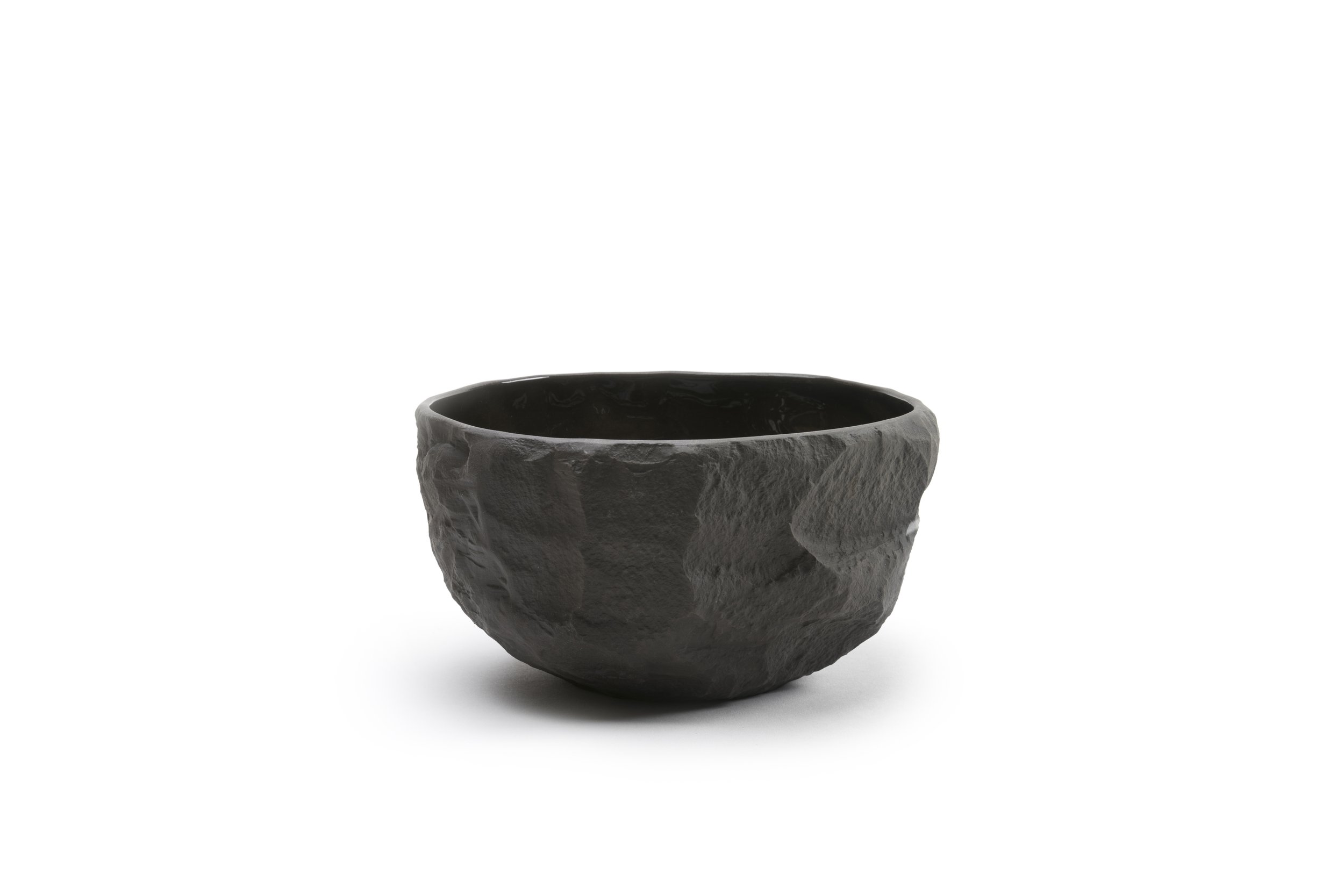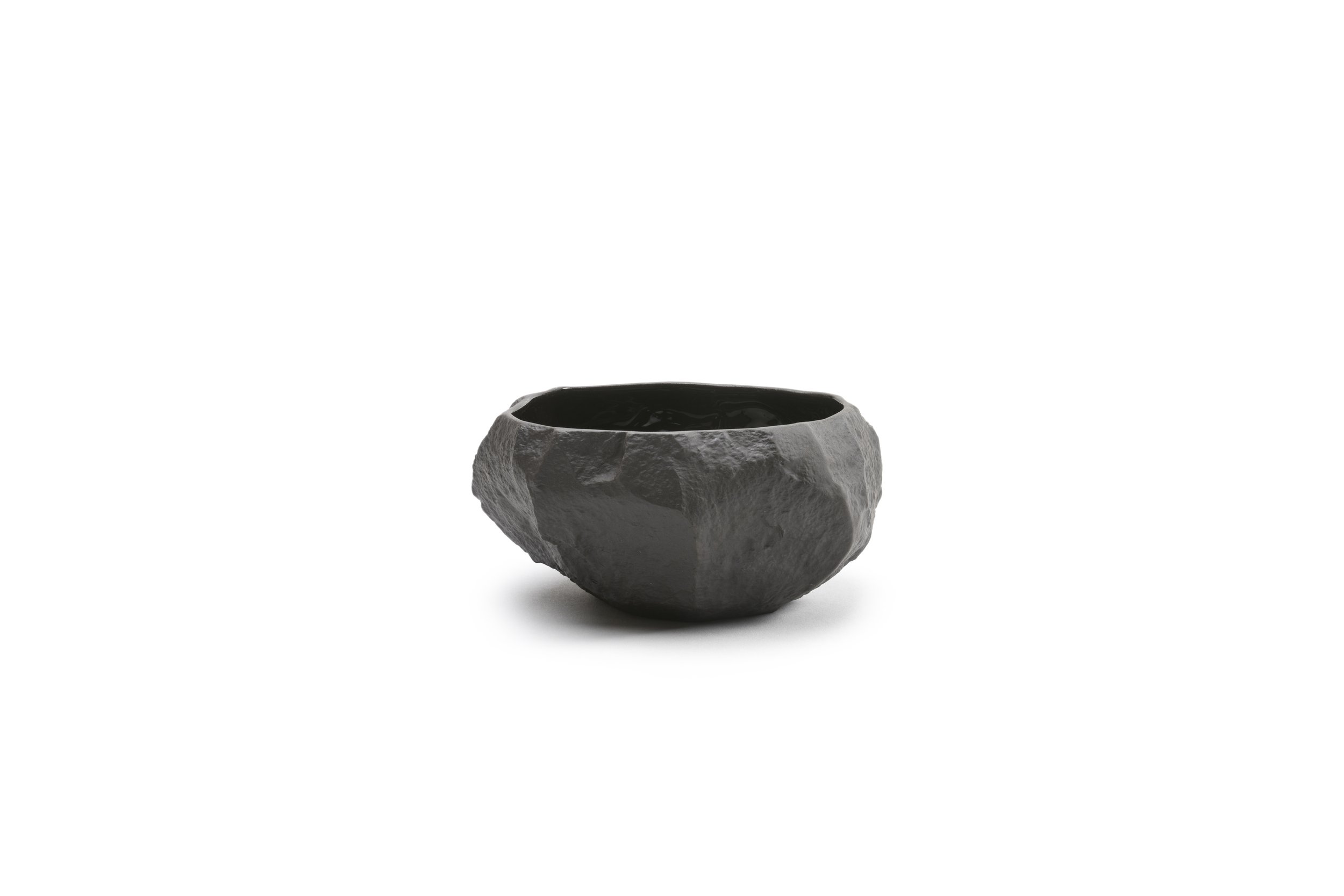




Max Lamb x 1882 Ltd. Crockery, Small Bowl
Designed by Max Lamb in collaboration with 1882 Ltd.
Crockery is a collection of fine bone china tableware slip-cast from plaster models carved by hand, with glazed interior for functionality and raw exterior reflecting the modest surface texture of the plaster original.
Using the tools of a stonemason Max Lamb chips and carves a solid block of plaster to make a series of tableware, the design of each formed quite simply out of their own making.
The collection is testament to Max Lambs maxim to use materials honestly and processes transparently, to give both their own voice rather than impose his aesthetic.
Fine bone china, biscuit exterior, glazed interior. Dishwasher and Microwave safe. Made in Stoke-on-Trent, England.
5 CM H x 9 CM Ø
About the designer
London-based Max Lamb was born in Cornwall, England, an upbringing that imbued him with a love of nature and a creative spirit which have manifested in his practice as designer and maker. He graduated from the Royal College of Art, London in 2006, was named Designer of the Future at Design Miami/Basel in 2008 and continues to both produce and exhibit his work internationally.
Max is known for creating beautifully crafted pieces that have materials and traditional processes at their core. He looks to design products that stimulate dialogue between maker, product and user through a visual simplicity that effectively communicates the obvious.
Max Lamb x 1882 Ltd. Crockery, Small Bowl
Designed by Max Lamb in collaboration with 1882 Ltd.
Crockery is a collection of fine bone china tableware slip-cast from plaster models carved by hand, with glazed interior for functionality and raw exterior reflecting the modest surface texture of the plaster original.
Using the tools of a stonemason Max Lamb chips and carves a solid block of plaster to make a series of tableware, the design of each formed quite simply out of their own making.
The collection is testament to Max Lambs maxim to use materials honestly and processes transparently, to give both their own voice rather than impose his aesthetic.
Fine bone china, biscuit exterior, glazed interior. Dishwasher and Microwave safe. Made in Stoke-on-Trent, England.
5 CM H x 9 CM Ø
About the designer
London-based Max Lamb was born in Cornwall, England, an upbringing that imbued him with a love of nature and a creative spirit which have manifested in his practice as designer and maker. He graduated from the Royal College of Art, London in 2006, was named Designer of the Future at Design Miami/Basel in 2008 and continues to both produce and exhibit his work internationally.
Max is known for creating beautifully crafted pieces that have materials and traditional processes at their core. He looks to design products that stimulate dialogue between maker, product and user through a visual simplicity that effectively communicates the obvious.




















